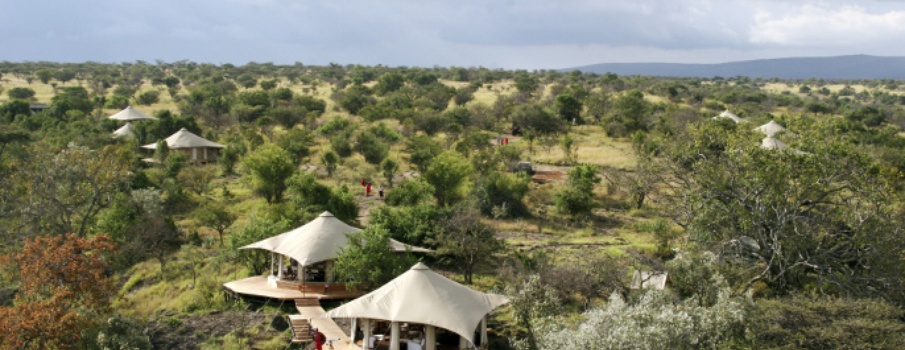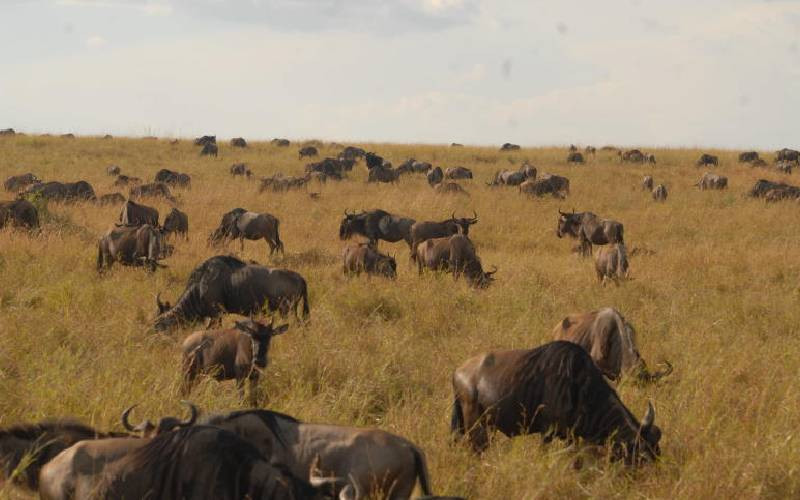
Sitting inside the 12-seater Cessna for the 40-minute flight from Wilson Airport to Masai Mara can be an unnerving experience. At a time when planes disappear without trace, it takes tonnes of optimism to “sit back, relax and enjoy the flight.” On the Masai Mara route, they operate like our matatus – hopping on and off the various airstrips strewn across the Mara.
My destination was Ol Seki, a set of 10 stylish tents set on a rocky outcrop overlooking the Isupukiai River valley that are part of the Hemingways Collection.
Waiting next to a Toyota Landcruiser is Raphael, the young lad who honed his skills as a tour driver and guide at the nearby Koiyaki Guiding School. He is clad is his traditional Masai regalia and it is hard to pick him out from a group of young men selling curios nearby.
It is easy to rule him out until he maneuvers the tour van out of the mud with the ease of a veteran. His driving skills through one of the crocodile infested rivers in the Mara earn him hearty applause from his charges. His mastery of things wild is just second to none, making him a darling of many visitors to Ol Seki. Enough of Raphael.
The enchanting camp is based at Naboisho, a 200 square kilometre conservancy situated north of the Mara National Reserve. Unlike the main reserve, Naboisho is still a pristine wildlife conservation area that has suffered minimal battering from mass tourism. Tourism is controlled to ensure as little human footprint as possible.
As my small group of companions chat animatedly, I use the prelude to explore the surroundings. The view of the Mara plains from any vantage point is magical. Even a menacing dark cloud on one side reflecting the light of the afternoon sun on the other creates unforgettable moments. From the hopping rock hyraxes to tweeting birds, the air is full of tranquility.
Luxury camping
Camps like Ol Seki have changed the ways of the wild in Kenya as bush décor goes a notch higher. Gone are the days when camping was a dull affair that involved pitching some pins on the ground, laying a mattress under some green canvas while using the nearby bushes as the bathroom. Ol Seki’s interior décor defies that tradition. In the world famous Maasai Mara, five-star camping is now the norm.
The high dome tents are centred with twin beds well-decked out in fine linen. The rooms have a number of openings that allow you to peer into the wide open African savannah during the day and gaze at the abundant wildlife. Despite the location, the tents have ensuite bathrooms at the rear. For those still mindful of their looks even in wild Africa, a dressing area similar to that found in the contemporary hotel has been availed. For the total enjoyment of life in the wild however, do not expect to find flat screens or any other electronic distractions within the camp.
The common lounge is likewise made with guest comforts in mind. Apart from the cosy seats with African print, the rustic wooden shelves contain a collection of old African literature with information on the legendary Safaris of old, traditions of local tribes, wildlife guides as well as photographic collections of East Africa’s rich history.
In front of each tent is a large wooden deck where one can enjoy private dining, sunbathing or star gazing. Retention of nearby shrubs ensures that your tent is shrouded in total secrecy. A modern pair of long range binoculars adorns the tents to help you scan the wide world around you.
During the night, the good, old paraffin lanterns and candles light up the dark expanse as noises from nocturnal creatures pierce the otherwise tranquil night.
With these comforts, the camp lives up to the true meaning of the Ol Seki tree, or the sandpaper tree, which in the local Masai language means “blessed”.
Stay informed. Subscribe to our newsletter
 The Standard Group Plc is a
multi-media organization with investments in media platforms spanning newspaper
print operations, television, radio broadcasting, digital and online services. The
Standard Group is recognized as a leading multi-media house in Kenya with a key
influence in matters of national and international interest.
The Standard Group Plc is a
multi-media organization with investments in media platforms spanning newspaper
print operations, television, radio broadcasting, digital and online services. The
Standard Group is recognized as a leading multi-media house in Kenya with a key
influence in matters of national and international interest.
 The Standard Group Plc is a
multi-media organization with investments in media platforms spanning newspaper
print operations, television, radio broadcasting, digital and online services. The
Standard Group is recognized as a leading multi-media house in Kenya with a key
influence in matters of national and international interest.
The Standard Group Plc is a
multi-media organization with investments in media platforms spanning newspaper
print operations, television, radio broadcasting, digital and online services. The
Standard Group is recognized as a leading multi-media house in Kenya with a key
influence in matters of national and international interest.









